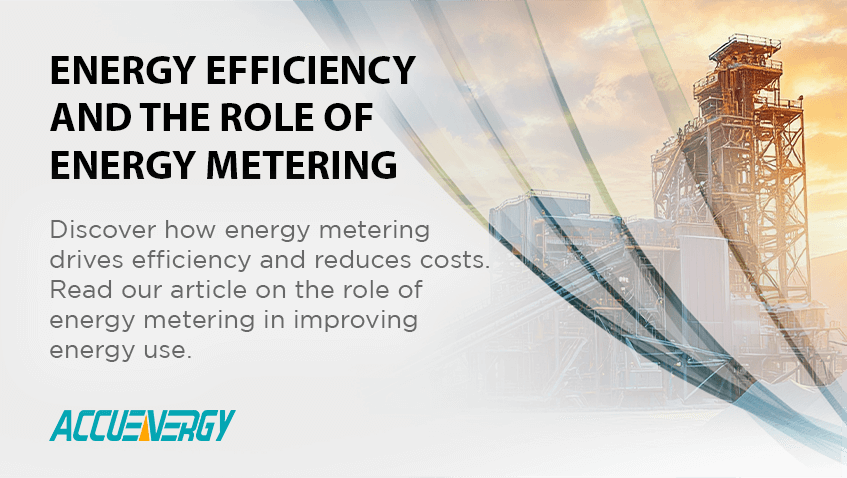Energy Metering Role in Optimizing Energy Efficiency
The modern digital world is driven by technological advancements, creating an integrated ecosystem of individuals, businesses, and governments that increasingly rely on more energy generation to sustain daily operations. Heavy demand for energy has placed a burden on power grid systems, and as a result, proper government policies are required to manage energy consumption, and cut costs, while minimizing the environmental impact. A principal cornerstone to improving energy efficiency is monitoring power quality and energy loads within the overall power grid infrastructure using industrial-grade meters. High accuracy energy instruments play a crucial part in the measurement of energy usage used by energy managers to map trends and historical data analytics to identify key energy optimization opportunities through detailed insights that can lead to smarter energy usage.
What is Energy Efficiency?
Energy efficiency is an improvement to the electrical load result in using less energy while operating at the same capacity. It incorporates a number of different methodologies, strategies, and technologies that can be applied across various sectors, from residential households to intensive industrial operations. Energy efficiency can involve optimizing processes, adopting green technology, and following sustainable practices. For instance, energy-efficient equipment, better insulation, and optimized industrial machinery all contribute to reducing overall energy use.
By reducing energy waste, energy efficiency helps lower utility bills, reduce carbon emissions, and contribute to a more sustainable future. According to the International Energy Agency (IEA), improving energy efficiency is one of the most cost-effective ways to meet global energy needs, reduce greenhouse gas emissions, and improve energy security.
The Role of Energy Metering
At the most basic level, energy metering is an instrument that measures and records the amount of energy consumed by electrical loads, infrastructures, commercial applications, or industrial facilities over a time period in kilowatts-per-hour. More advanced meters can have hundreds of parameters such as voltage, current, power, harmonics, unbalance, power factor and transients for predictive analysis, automation, and AI.
Energy meters differ from utility meters by allowing energy managers to obtain a more detailed analysis of loads within a building. A utility meter usually collects the total energy usage for the entire building without providing information on how energy consumption is distributed, whereas energy meters provide real-time energy usage data on a more granular level, helping organizations understand individual load patterns to identify areas for improvement.
Accuracy is another important factor for metering, industries often require meters to comply and be certified by international standards. IEC and ANSI are two globally recognized standards established for safety and accuracy. By having accurate measurements, organizations can implement energy-saving strategies that would otherwise go unnoticed and reduce their utility billing.
Advances in energy meter technology has allowed energy managers to collect more reliable data to improve a building automation process. Energy meters provide detailed, real-time insights into energy usage, which can be accessed remotely for analysis, offering an unprecedented level of real-time management and control over energy behaviour. For example, organizations can identify the precise timings and locations of their energy consumption, allowing them to schedule energy-intensive tasks during off-peak hours, do demand-side management, or invest in more energy-efficient equipment.
Benefits of Energy Metering for Efficiency
Energy metering plays an important part in helping organizations create a more sustainable and effective energy management plan, which not only helps lower the electricity bills but also reduces energy waste to drive a more sustainable energy usage policy.
A robust energy metering infrastructure provides real-time insights into the facility's energy consumption pattern, helping organizations to identify inefficient devices and understand peak usage times. Organizations can use real-time data to make data-driven decisions accordingly, such as replacing inefficient devices, or scheduling energy-demanding tasks on specifics times during lower energy cost.
In recent years, technologies in smart metering have advanced significantly, which gives organizations the opportunity to take full control of their energy usage. Energy metering will continue to play a crucial role in creating a more energy-efficient and sustainable future.

